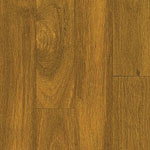Serving Upstate NY—VT—MA • For selections & prices, CALL or EMAIL US
Tiete Chestnut (Sucupira)
Grades & Properties of Wood Flooring —
Exotic Species
Scientific Name:
Bowdichia nitida
Other Common Names and Related Species:
- Brazilian Chestnut
- Sucupira
Shop online now for Tiete Chestnut Flooring »
Origin:
Venezuela, the Lower Amazon, Brazil and French Guyana.
Janka Hardness: 2700
Tiete Chestnut has almost the same hardness as Australian Red Mahogany.
Grades of Tiete Chestnut Flooring:
Clear grade Sucupira flooring is color-sorted for a rich consistent deep reddish brown color. Tiete Chestnut is a dark colored wood and is most popular in the Clear grade. Only the heartwood of the tree is used in the Clear grade. Tiete Chestnut is more brown in color Brazilian Cherry but darker than Brazilian Teak.
Tiete Chestnut Flooring Dimension Specifications:
Most Sucupira flooring is milled in South America because it is more cost-effective to ship finished material than raw lumber. Lengths of the Sucupira flooring bundles are 7 feet so they can easily fit into 8-foot-wide steel shipping containers. All pre-milled products are tongue-&-groove and end-matched (tongue-&-grooved on the ends of the boards). Moisture content ranges from 6% to 8% for quick acclimation. The average length of the flooring pieces is usually about 3 feet and ranges from 1 to 7 feet. Almost all imported flooring that is found is in 7-foot bundles, with widths available from 2¼″ to 5″. If a long or wide plank floor is desired, raw lumber must be obtained and the flooring must be milled here in the United States. Typically, the lengths can develop up to 12 feet. However, the cost can be double that of the pre-milled stock because of waste and labor costs in the United States. Also, raw lumber is relatively expensive because it is taxed more heavily than finished products to support local economies in South America. In addition, Sucupira lumber is very scarce.
Flooring Availability:
Tiete Chestnut is readily available prefinished or unfinished in solid form for nail-down applications on a wood subfloor and in engineered form with a veneer top layer for application over concrete. Tiete Chestnut is a peripheral species in comparison with Brazilian Cherry and Brazilian Teak. There is a large amount of Sucupira in South America, and it is not endangered. However, less logging, stricter regulations, the decking market, and a slower American economy have limited commodities and caused slightly higher prices of this product in this country.
Finished Floor Appearance:
A Clear grade floor will have an even reddish brown appearance. Oil-based finishes are recommended, as water-based finishes may appear milky in appearance because of Sucupira’s dark color. Tiete Chestnut does not darken noticeably in sunlight.
Flooring Durability and Stability:
Tiete Chestnut flooring is very durable and resists denting and traffic wear quite well. It is much harder than North American floors because of its density and is relatively stable. Sucupira flooring is heavy, weighing about 3 pounds per square foot.
Workability of Tiete Chestnut Flooring:
Being extremely hard and tough, Sucupira works with some difficulty with both hand and power tools. When installing Tiete Chestnut flooring, it is best to use a manual nailer. Staples and pneumatic nailers tend to split the wood. It holds screws well, and it glues, stains, and polishes to a very attractive finish. It can be somewhat difficult to sand with flooring equipment because of its hardness. Professional sanding and finishing is recommended. This wood is very resistant to decay and insects; these resistant properties may contribute to a possible allergic response to the dust. To avoid a possible allergic reaction to the material, wear a dust mask and long-sleeve shirt when working with Sucupira.
Principal Uses of Tiete Chestnut Flooring:
Sucupira flooring is used in medium- and high-end residential and commercial applications for a dramatically elegant floor. It is also used for color-contrasting borders and medallions.





